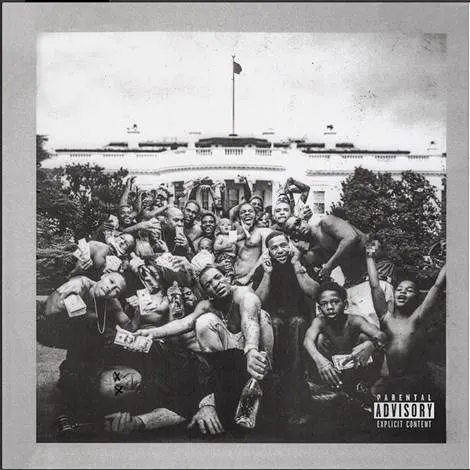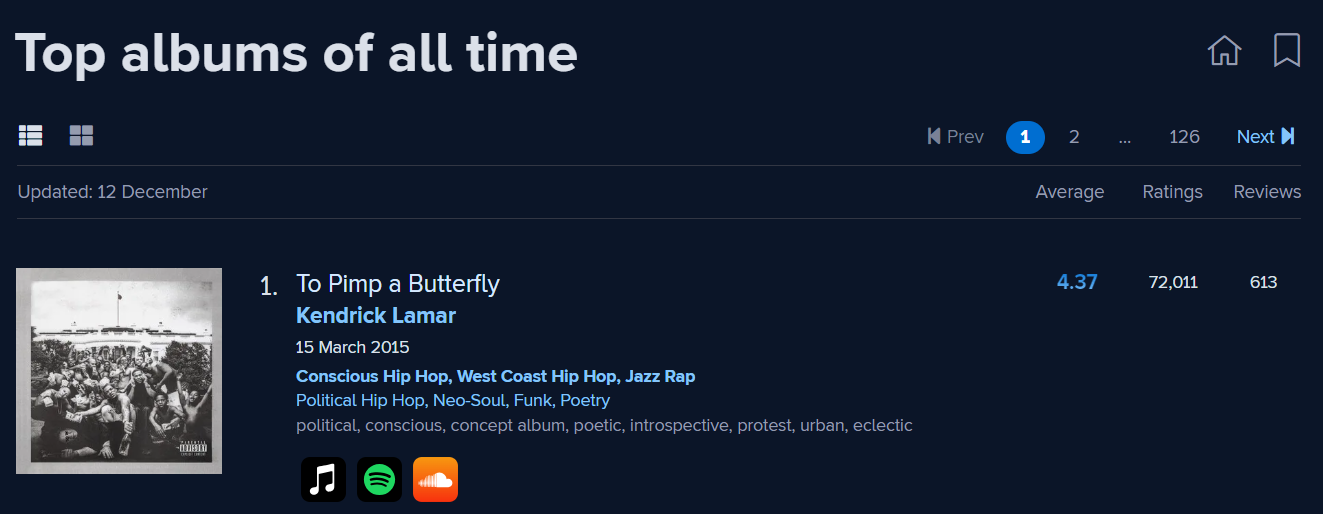

At its core, music is art. To describe it as anything else before art would be deceitful, as music is primarily meant to be consumed for enjoyment. Recorded music must also be commercially produced and distributed, but it is only done so to be consumed as art. As music has evolved over time, its artistry has taken many different forms, a key example of which being the album. While one song on its own can have a great artistic merit, the format of the album allows an artist to create a more wholistic musical experience. As a result, from the perspective of music as a means of artistry, albums are superior to music.
One key example of this is the album To Pimp a Butterfly by Kendrick Lamar. This work is more specifically designated as a “concept album,” an album which purposely has a greater theme and seeks to communicate that through its songs over the course of its runtime. In this case, that theme is racial tension within the United States. This is possibly best described by Sequoia Maner, an author with a close and similar upbring to Lamar’s who writes, “Kendrick Lamar offers listeners a personal narrative that examines what it means to stay healthy and whole in a system of racial capitalism… Kendrick’s music echoes bright against a redundant background of rap cliches by celebrating aliveness and liberating love” (Maner X). As evidenced by Maner’s perspective, Lamar’s album is not only a collection of songs, but one which seeks to communicate his complex perspective on living as a black man in modern America. Lamar could produce and release an individual song which covers this topic, but such would be unable to represent a fully cohesive perspective.
One of the details which best represents To Pimp a Butterfly as a complete work of art is the reoccurring spoken-word poem which is slowly built up across the album. This poem is innately linked to the album, gradually flowing and growing alongside its songs, with each revealed section of the poem supporting the themes being communicated at that point in the album’s track listing. By linking his musical album to another more concise work of art, Lamar is giving his album value as a cohesive work. Such a value which could not have otherwise been attained by releasing individual, disconnected songs.
To Pimp a Butterfly stands as pure form of art, expression, and creativity in the music industry, and as a result received mass success. As Maner cites in her book, the album “launched Kendrick into another stratosphere” (Maner 2). The album lands at the #1 spot of seemingly endless music outlet rankings and was nominated for 11 Grammy awards, including album of the year. However, To Pimp a Butterfly’s success doesn’t just come from its awards and acclaim, it is seen as a truly important album due to its public reception and continued praise over time. Online music culture and discussion has labeled Lamar’s album as pivotal and unsurpassed. For example, on Rate Your Music, a community sourced music reviewing platform, the album currently sits as the “greatest of all time” with over seventy thousand individual reviews deciding such (“Top albums…”). A sort of culture has formed around To Pimp a Butterfly, one which sees its creativity and artistry as defining of its greatness and as a goal for other music to strive for.

As evident by the artistry of Kendrick Lamar’s To Pimp a Butterfly combined with its immense critical and public praise, from an artistic perspective of music, albums are superior to singles.